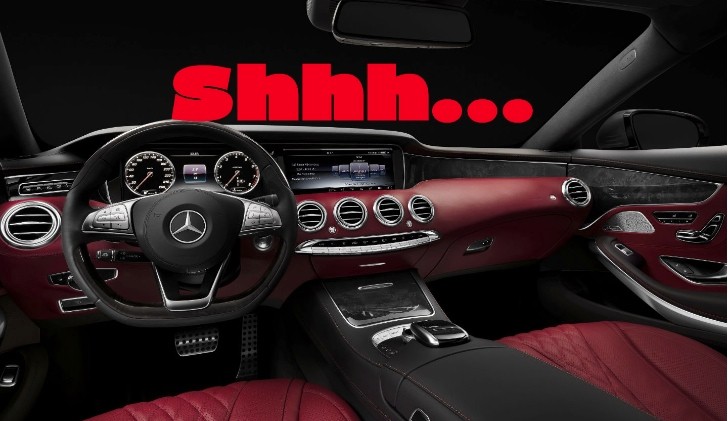Not exactly surprising for some, one of the main objectives of Mercedes-Benz when developing the current S-Class (W222) and S-Class Coupe (C217) was a very low interior noise level, with aero-acoustics experts working to optimize the shape of the exterior in certain areas as early as the design phase.
A bit more surprising than that is that the S-Class Coupe has a quieter interior than both its predecessor, the CL Coupe, and its sedan brother.
Still, what will probably drop quite a lot of jaws is the fact that the Mercedes-Benz S-Class Coupe is the quietest series-production car in the world when it comes to interior wind noise.
This fact was apparently proven by measurements taken in the wind tunnel, using an artificial head that simulates the driver's hearing, but also with the help of specially trained (real) people.
Mercedes-Benz actually uses an in-house index, which they call the Aeroacoustics Index, that was developed over the course of a long series of pre-determined tests that asses wind noise inside the vehicle.
Not only that, but the Germans also simulate possible noise in the event of crosswinds, which are simulated using an oblique inflow of air of up to 20 degrees inside the wind tunnel.
Obviously, the main reason for the excellent results of the S-Class Coupe is down to its coupe-shape, since it has a relatively small total surface of windows, but the rest comes from meticulous work from aero-acoustic engineers.
Aerodynamics also play a huge part in this result, with Mercedes-Benz implementing the following measures on the S-Class Coupe:
Thanks to the aerodynamic optimization of the mirrors and in the area where the windshield meets the roof, the door windows are kept free of tear drops, while the rear window remains free of dirt up to a speed of approximately 160 km/h (99 mph) - and all of this while the interior wind noise is so low that you can carry a casual conversation without raising your voice.
Still, what will probably drop quite a lot of jaws is the fact that the Mercedes-Benz S-Class Coupe is the quietest series-production car in the world when it comes to interior wind noise.
This fact was apparently proven by measurements taken in the wind tunnel, using an artificial head that simulates the driver's hearing, but also with the help of specially trained (real) people.
Mercedes-Benz actually uses an in-house index, which they call the Aeroacoustics Index, that was developed over the course of a long series of pre-determined tests that asses wind noise inside the vehicle.
Not only that, but the Germans also simulate possible noise in the event of crosswinds, which are simulated using an oblique inflow of air of up to 20 degrees inside the wind tunnel.
Obviously, the main reason for the excellent results of the S-Class Coupe is down to its coupe-shape, since it has a relatively small total surface of windows, but the rest comes from meticulous work from aero-acoustic engineers.
Aerodynamics also play a huge part in this result, with Mercedes-Benz implementing the following measures on the S-Class Coupe:
- Sealing in the vicinity of the headlamps
- Wheel spoilers with optimum flow ahead of the front wheels
- Lowering of the vehicle by 10 mm compared to the basic level, as a function of the vehicle speed
- Optimized underbody panelling concept with large engine compartment and main floor panels to also further minimize the penetration of carriageway noise
- Large area of cladding on the rear axle
Thanks to the aerodynamic optimization of the mirrors and in the area where the windshield meets the roof, the door windows are kept free of tear drops, while the rear window remains free of dirt up to a speed of approximately 160 km/h (99 mph) - and all of this while the interior wind noise is so low that you can carry a casual conversation without raising your voice.

